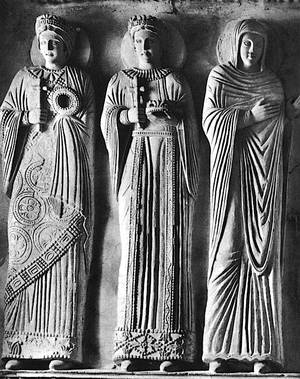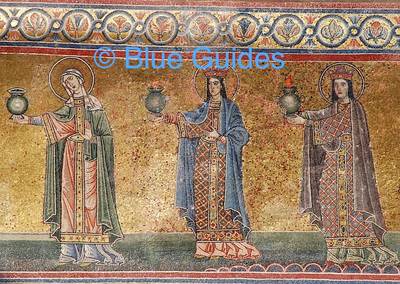Moulded in stucco above the west doorway of the Lombard Tempietto in Cividale del Friuli is a famous frieze of six graceful female figures appearing in single file on either side of a narrow aperture. Below the aperture is a semicircular door hood carved with Eucharistic symbols of grapes. On either side of the narrow aperture, the two outermost women are richly clad. Their heads are crowned and in their hands they carry regalia or offerings: a cross and a diadem. The two figures nearest to the aperture are dressed very plainly. Their heads are veiled and they have no crown. Nor do they bear any gifts or royal trappings: they merely extend their hands towards the aperture itself, to show—-what? Are their hands raised in supplication? In adoration? What would the aperture have contained? What would have appeared at its narrow window? The date of this beautiful work of art is the eighth century AD.

Moving to Rome, to the district of Trastevere and the great church dedicated to the Virgin, Santa Maria in Trastevere. The façade of this church is adorned with a long mosaic frieze depicting a procession of ten female figures, five on each side, approaching a central Madonna and Child. The six outermost women are very richly clad in embroidered gowns. Their heads are crowned and they bear lamps, each with a darting vermilion flame. The four women closest to the Virgin, however, are only veiled. They have no crowns and their lamps are unlit. The date of this equally lovely work is the twelfth/thirteenth century.

But what is the significance of it all? I have no answer. Perhaps it is mere coincidence. But I am still sleuthing. Any help or suggestions would be very welcome.






